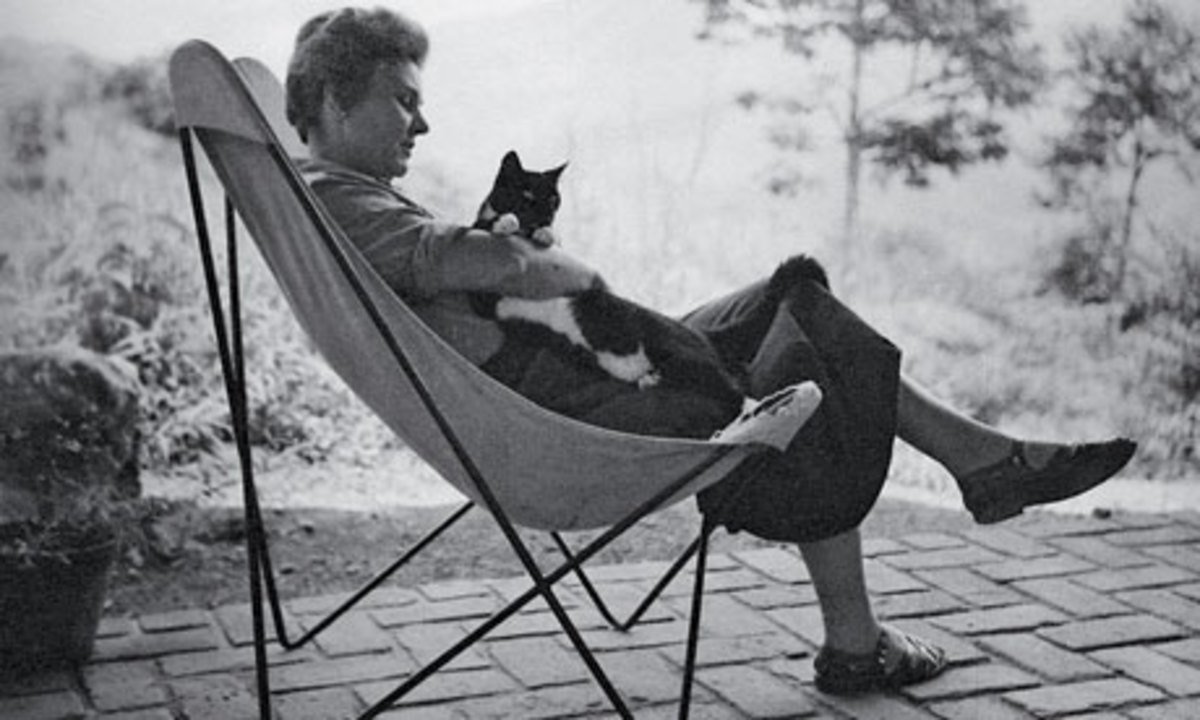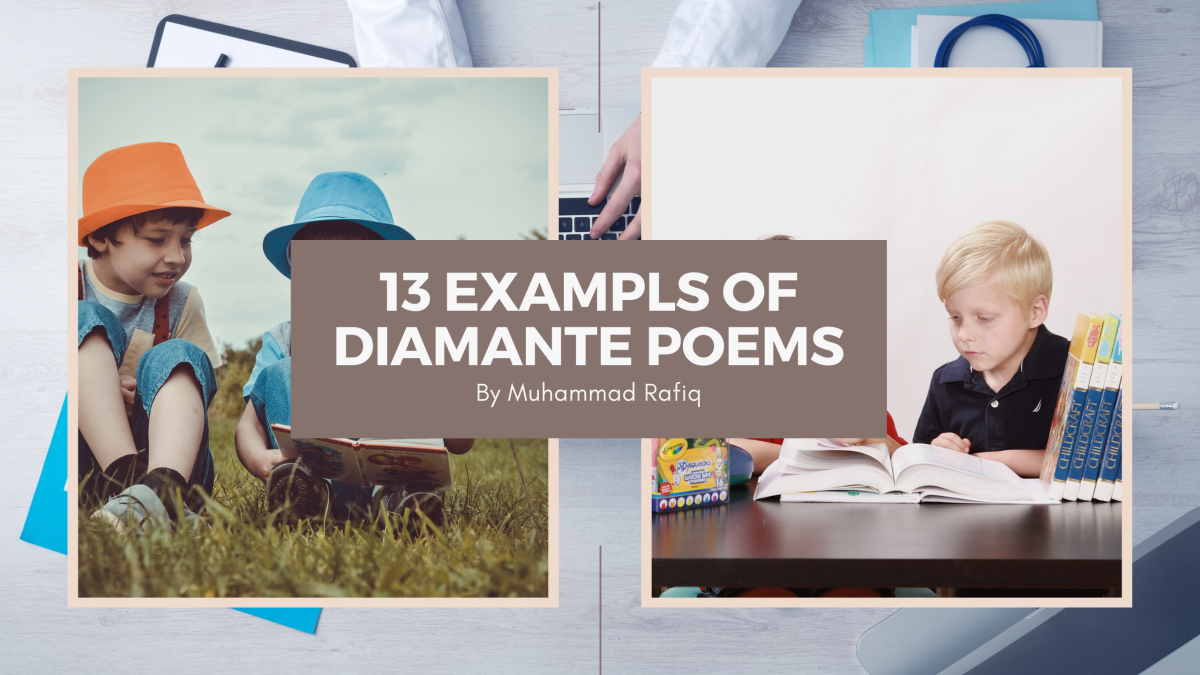Haiku Heaven
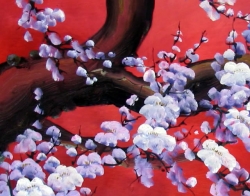
Haiku says a lot with a little . . .
haiku verse are short
distillations of beauty
with weightless punch lines
Below you'll find a little history about three historical haiku-ists and examples of their work, information on contemporary haiku with examples, several miscellaneous samples of haiku, haiku resources and associations, and more.
Haiku: A Relatively New Form of Poetry
The term hokku means "starting verse." Hokku was the starting link of a much longer chain of verses called haika. The hokku set the tone for the verses that followed. It was not uncommon for a poet to compose a hokku by itself with no following verses.
In the 1890s, the hokku was established as an independent verse called haiku (largely through the efforts of Masaoka Shiki). The haiku is considered complete in itself.
art above: gregg_r_1999 / photobucket
Any proceeds from this lens go to the National Wildlife Federation
Haiku for Everyone
1
Temple bells die out.
The fragrant blossoms remain.
A perfect evening!
~Basho, Matsuo ~
Matsuo Basho - 1644 - 1694
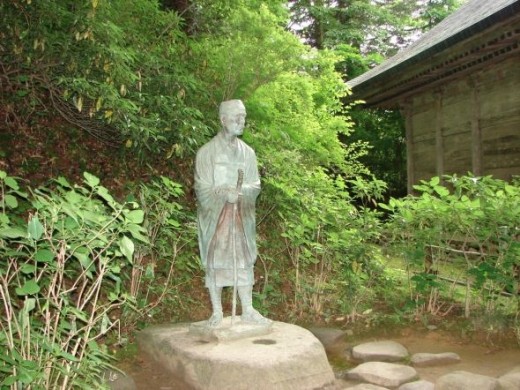
In childhood, he was called Kinsaku. The name Basho (banana tree) was adopted around 1681 after moving into a hut with a banana tree next to it. He was called Matsuo Munefusa in his later days.
Basho's father was a low-ranking samurai (Iga Province). Basho serviced for the local lord, Todo Yoshitada (Sengin), to become a samurai. It turns out Yoshitada liked to write haikai, and in his service, Basho began writing poetry with the pen name Sobo.
Basho was a travel junkie, taking many trips throughout Japan. He died while on a trip, in Osaka. It seems Basho had haiku and travel on his mind even then. His last haiku says:
Fallen sick on a journey,
In dreams I run wildly
Over a withered moor.

Five of Basho's
Polished and polished
clean, in the holy mirror
snow flowers bloom
Gray hairs being plucked,
and from below my pillow
a cricket singing
Nothing in the cry
of cicadas suggest they
are about to die
How very noble!
One who finds no satori
in the lightning-flash
With dewdrops dripping,
I wish somehow I could wash
this perishing world
A Pleasant Diversion
Review . . .
"Haiku: Poety Ancient and Modern" makes a pleasant diversion from the stresses of daily life. It is also a nice way to fill the commercials in Buffy the Vampire Slayer. Buy it. Put it on your coffee table. Enjoy it. (S. Holland)

The whole world's in on it . . .

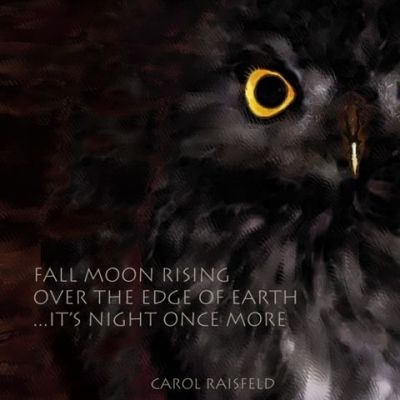
2
the Moon on the night of the 16th -
whales showed up for the first time
Kumano Bay.
~ Buson, Yosa ~
Yosa Buson - 1716 - 1784
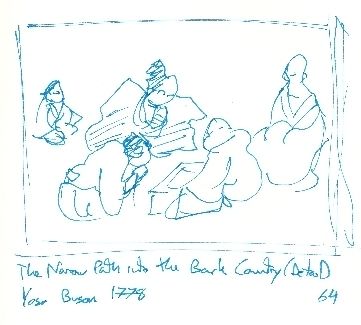
Yosa Buson was born in the village of Kema in Settsu Province in 1716. He was a poet and a painter, and along with Basho and Issa, Buson is revered as a great poet of the Edo period.
Buson moved to Edo (now Tokyo) around the age of 20 and studied poetry with haikai master Hayano Hajin. Buson moved to Shimo-Usa Province after Hajin died. Like Matsuo Basho, Buson traveled northern Honsho (the inspiration for Basho's famous travel diary, The Narrow Road to the Deep North).
After extensive traveling, Buson put down roots in Kyoto. He was 42, and began writing under the pen name of Yosa.
When 45, Buson put on the ball and chain. He had one daughter named Kuno. Buson taught, and continued writing, in Kyoto. After 1770 he wrote under the name Yahantei (Midnight Studio), the same name his teacher, Hayano Hajin, had used.
Buson died at age 68, and was buried in Kyoto.

Five of Buson's
Rain falls on the grass,
filling the ruts left by
the festival cart
Sweet springtime showers
and know words can express
how sad it all is
Utter aloneness,
another great pleasure
in autumn twilight
By flowering pear
and by the lamp of the moon
she reads her letter
When a heavy cart
comes rumbling along
peonies tremble
Soup and Sandwich . . . Haiku and Watercolors

Haiku with Pics

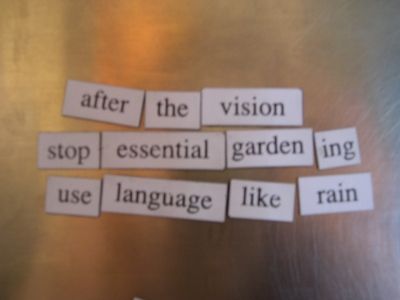
3
buckwheat flowers
hidden in the mountains -
the Moon on the 13th Night
~ Issa, Kobayashi ~
Kobayashi Issa - 1763 - 1828
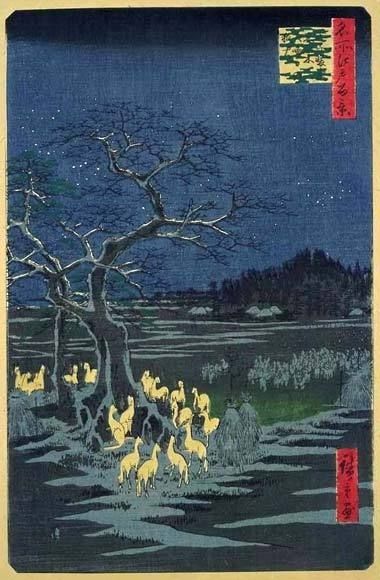
Issa was born Kobayashi Yataro, part of a peasant family of present-day Shinanomachi, Nagano prefecture. His mother died when Issa was three and he was then in the care of his grandmother. His father remarried five years later and a half-brother to Issa was born two years after that. At the age of 14, Issa's grandmother passed away, leaving Issa a moody loner who liked wandering the fields. Apparently, the stepmother didn't care for Issa's adolescent attitude, and Issa was sent to Edo (present-day Tokyo) to make his own living at 15. The following ten years of his life is an historical blank.
Issa continued his wandering through Japan. When his father died in 1801, Issa came away with rights to half of the property his father left, in spite of his step-mother's attempt to leave him out in the cold. At 49, he returned to his native village and married Kiku. Their first-born dies shortly after birth, and also their second less than two-and-a-half years later. Issa wrote:
The world of dew --
A world of dew it is indeed,
And yet, and yet . . .
Issa lost yet another child in 1820. Kiku passed away in 1823. Twice more, Issa tied the knot. According to the Western Calendar, Issa died on January 5, 1828 in his native village, leaving behind a large body of writing.
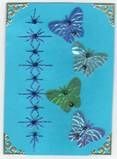
Five of Issa's
People working fields
from my deepest heart, I bow.
Now a little nap.
The winter fly
I caught and finally freed
the cat quickly ate
The distant mountains
are reflected in the eye
of the dragonfly
A world of dew,
and within every dewdrop
a world of struggle
Now we are leaving,
the butterflies can make love
to their hearts' desire
Basho, Buson, Issa - The 3 Haiku-teers



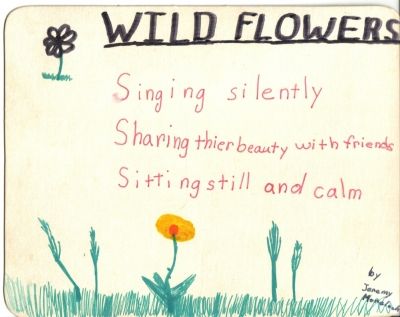
You and Haiku
I LIKE TO . . .
just five seven five
syllables to say something
that leaves one breathless
Write . . . Share . . . Teach . . .

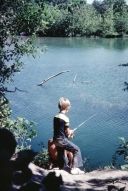
On the riverbank
a small boy casts his line -
the scattering clouds
~ JoanCouzens Sauer ~

Hai-Society
- World Haiku Association
It is our wildest dream that poets from many languages and cultures will share their work here, and engage in dialogue that will further their understanding and mastery of the form. It is my belief that poets will determine the future shape of haiku, - The World Haiku Club
The World Haiku Club is a non-profit-making organization, established for the purpose of creating a world-wide network of haiku poets through which to help disseminate and develop haiku, and also to raise standards and quality of the genre. - The Haiku Society of America
The Haiku Society of America is a not-for-profit organization founded in 1968 to promote the writing and appreciation of haiku in English. Membership is open to all readers, writers, and students of haiku. The HSA has been meeting regularly since its - Irish Haiku Society
The Irish Haiku Society, founded in September 2006, is an association of haiku poets. The Irish Haiku Society organizes haiku meetings, readings, book-launches, workshops, ginko and other haiku-related events. Guest membership and publication of work - German Haiku Society
The centre of interest is the Haiku, a poem with which expresses experience of nature and seasons, has a strongly symbolical character and mediates meditative insights. Everybody may become member of DHG, if he is composing poems or not. - British Haiku Society
The BHS is pioneering the appreciation and writing of haiku in the UK, and has links also with similar organizations throughout the world. There are currently approx. 300 members, four-fifths of whom live in the UK.
Haiku for Kids
Haiku Is . . .
"Haiku is more than a form of poetry; it is a way of seeing the world. Each haiku captures a moment of experience; an instant when the ordinary suddenly reveals its inner nature and makes us take a second look at the event, at human nature, at life."
~ A.C. Missias ~
Its Not All Fives and Sevens . . . - Contemporary Haiku

There is a strong tradition of 17-syllable haiku in English, particularly dating from the spurt of haiku appreciation in the 1960s. Many authors wished to respect the Japanese structure, seeing that as one of the key defining aspects of the historical form, and thus aimed their own efforts into a 5-7-5 mold.
However, the English and Japanese languages are very different in their grammar and syllabic rhythms such that the typical Japanese haiku is generally translated most directly into around 12 English syllables, with variable line lengths.
Some authors have attempted to define an alternative haiku form which would more closely approximate the length of a Japanese haiku while demanding the discipline of a set structure. Advocates of this approach often recommend guidelines of 3-5-3 syllables or 2-3-2 accented beats, as closest approximations to that goal.
autumn rain --
the weathered tire swing
overflows ~ ACM ~
Today, haiku is a flexible form for brief, vivid capture of single moments of time, the writing of which allows one to both share those "aha moments" with others and to become more open to them oneself.
From an essay by A.C. Missias
Contemporary Haiku

tea cup
on the map of Vietnam-
leaving a stain
~ Ruth Holzer ~
***
moonglow . . .
just me, the drunk
and his honesty
~ Tyrone McDonald ~
***
moon blossoms . . .
her body prepared
for viewing
~ Francine Banwarth ~
***
Loretta last night
and now the lottery-
losing again
~ Mykel Board ~
***
as their boat floats
out of the tunnel of love
they move apart
~ Cor van den Heuvel ~
Kerouac Reads Hiaku
~ Chiyo ~
Since morning glories
hold my well-bucket hostage,
I beg for water
Cat Haiku:

I want to be close
to you. Can I fit my head
inside your armpit?
~ anonymous ~
Haiku Resources
- Web English Teacher
Lesson plans and resources for teaching haiku - In the moonlight a worm... (Welcome to the Haiku Homepage)
A teaching aid and self study unit for people interested in learning the art of haiku - The Art of Haiku
Are you fascinated by the world of haiku or baffled by talk of senryu, haibun, tanka, and other such terms? All is revealed . . . - Enter Butterfly Dreams
Come in, come in! There are haiku to be read and stories to tell. You'll also find links to other haiku sites further down this lonely road, but you don't have to hasten along . . . - AHApoetry
Welcome to Jane Reichhold's world of poetry that will make you say, "Ah ha!" as you discover and explore the many short form genres of poetry. - Haiku Spirit
The Way of Haiku is first of all a way of life. - Haiku Index Page
It is a way which leads to the expression of the Internal Experience based on the wonders and colors and aromas of Nature. - Introduction to Haiku
200 Best Haiku of Japanese Literature... Traditionally and ideally, a haiku presents a pair of contrasting images, one suggestive of time and place, the other a vivid but fleeting observation. Working together, they evoke mood and emotion. - Haiku Writing for Beginners
A lesson in Haiku appreciation and writing. - Daily Haiku
Mann Library's daily haiku. Celebrating one contemporary poet per month. - The Art of Haiku: Haiku Links
The Art of Haiku - Links - History of Haiku
Written by Ryu Yotsuya in Tokyo, Japon. History from Basho Matsuo to Koi Nagata. - Perihelion
Haiku is more than a form of poetry; it is a way of seeing the world . . . - Free Times : haiku publication, reference, rules, information
Portal to the international haiku community: haiku publication, reference, rules, information. - Haiku Research
Haiku examples, articles and research. - Ray Rasmussen Photography, Haiku and more . . .
Some beautiful stuff here. - Haiku Generator
The Genuine Haiku Generator was recently invoked in the authoritarian -- strike that -- authoritative Washington Post, adding to a long list of web, newspaper and radio spots featuring or mentioning this whimsical little pseudopoetry machine, the cli - HAIKU
A large haiku directory. - SciFaiku
SciFaiku is a form of poetry inspired by the Japanese haiku, also sometimes known as scifi-ku or scifiku. SciFaiku poems are short, minimal poems about science and science-fiction topics. They are presented with direct, tangible images in clear and s - New Zealand Poetery Society
The New Zealand Poetry Society is an incorporated non-profit organisation which aims to advance education by promoting, developing and supporting poetry and poets in New Zealand.
Please donate. We need lots of ice.
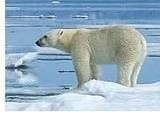
or leave a haiku
from your own creative heart,
bouquets of flowers













